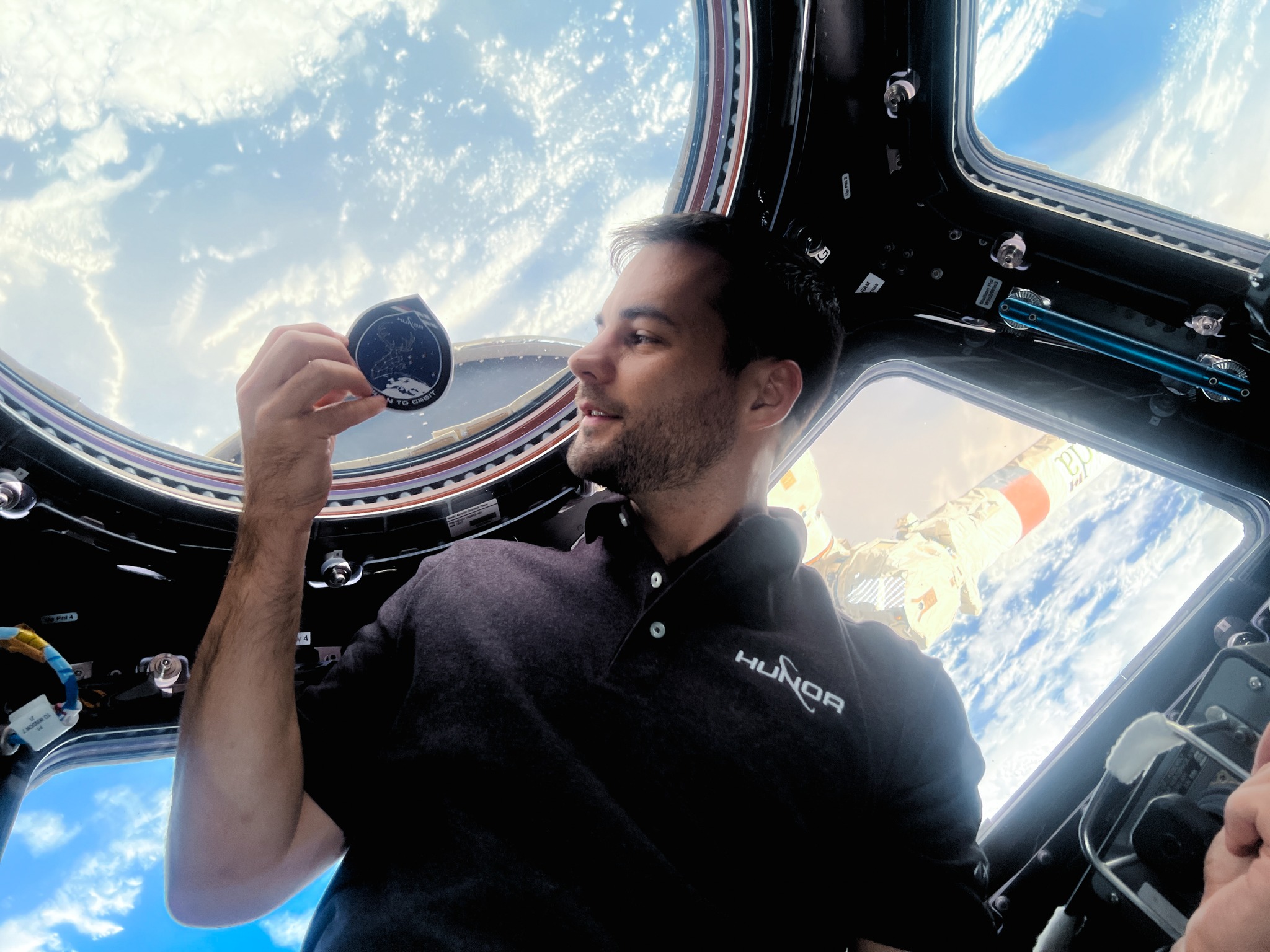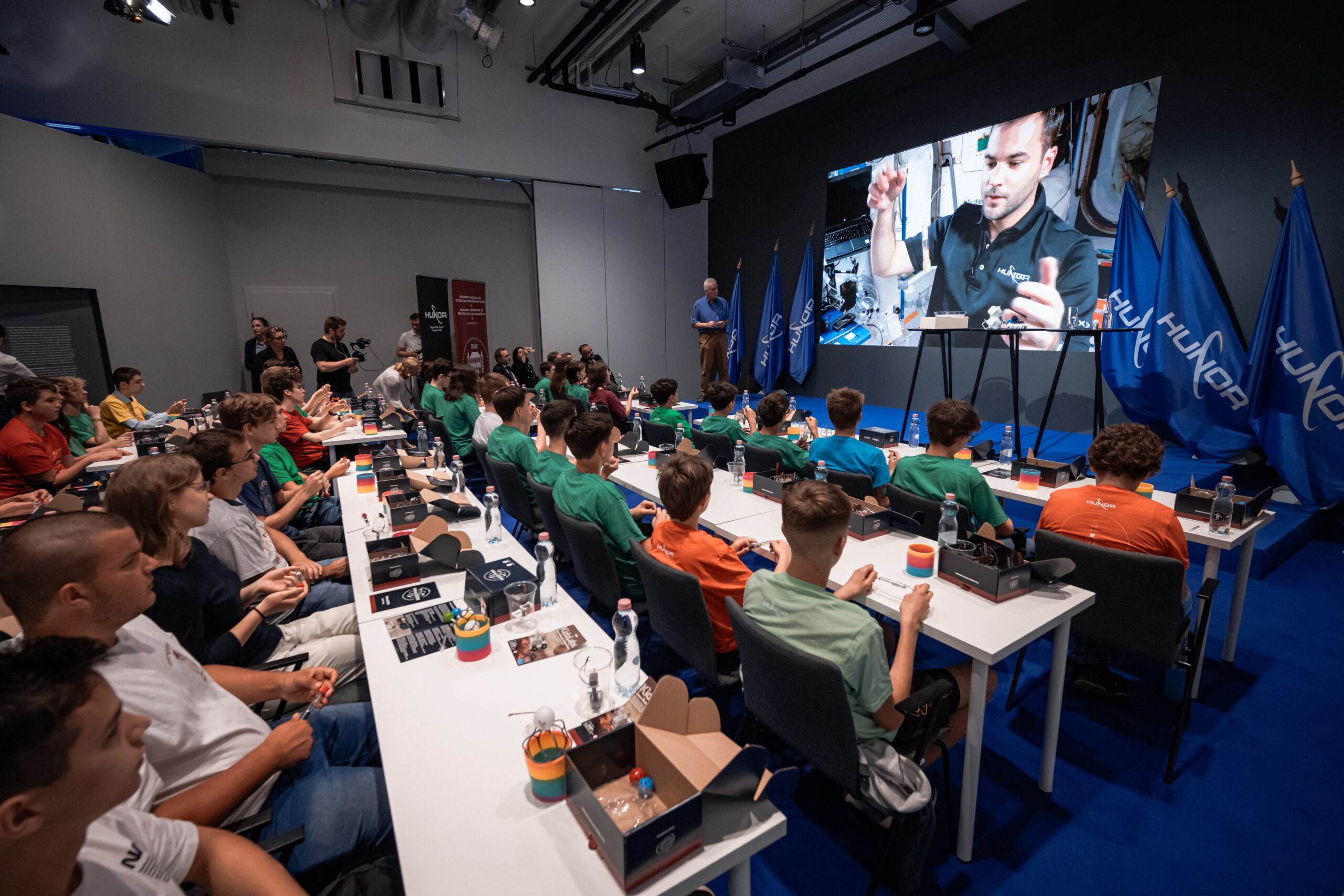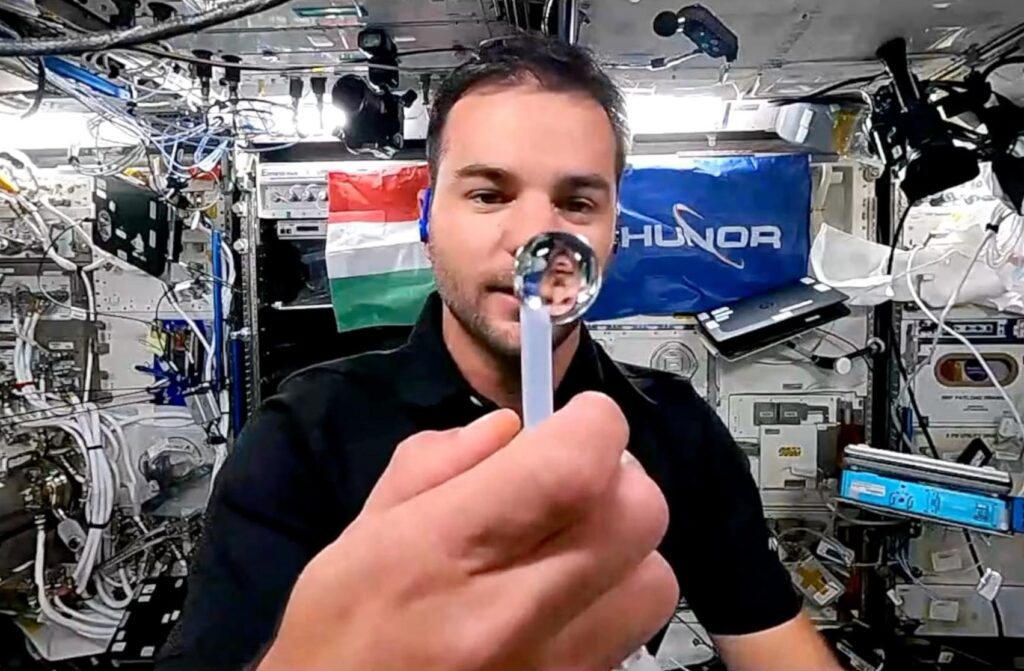
If the HUNOR program continues, there will be enough scientific expertise available to carry out further missions.Continue reading

On Wednesday, as part of a program called Interstellar Relations Day in Győr (western Hungary). sixteen primary and secondary school children were able to speak to Tibor Kapu, the Hungarian research astronaut aboard the International Space Station (ISS), and ask him questions.
The event was organized by the Széchenyi István University, the Mobilis Interactive Experience Center, and the National Media and Infocommunications Authority (NMHH), and was attended by about 300 children. A ten-minute connection was established between Mobilis and the ISS via a ground station in Maryland, USA, as the ISS was passing over North America at the time.
Before the connection was established, Orsolya Ferencz, Ministerial Commissioner for Space Research and Head of the HUNOR (Hungarian to Orbit) program, emphasized in her online welcome speech that we are at a historic moment when Tibor Kapu, “a research astronaut engineer, is carrying out experiments, tasks, and missions conceived by Hungarian minds and created by Hungarian creators, researchers, and engineers, thereby enriching the entire Hungarian scientific community.” She emphasized that the most important thing is that it makes it tangible and brings it closer to everyone that Hungary is a land of talent, from which many have already been able to produce results that benefit humanity.
Eszter Lukács, Vice President for International and Strategic Relations at Széchenyi University, spoke about how it is of paramount importance for higher education institutions to provide young people with knowledge that goes beyond everyday life. Space research, technological innovation, and scientific curiosity are all areas that will shape not only future economic development, but also the common future of humanity.
She added:
The example of Tibor Kapu shows that Hungarian researchers, engineers, and scientists can find their place at the forefront of the world.”
Zoltán Horváth, dean of Széchenyi University, pointed out that in the last quarter of this year, the university will launch a satellite they built themselves, which will be used to test a laser communication method.
Responding to questions from the children, Kapu explained how they protect themselves from harmful radiation, that he was rather nervous before the launch because they had been delayed by two weeks, and that when they were at the launch pad, there was a moment when they were 13 seconds away from postponing the launch. He also talked about how the first eight and a half minutes of the flight were extremely noisy, but after that, the crew was surrounded by a deep silence unlike anything he had ever experienced before. The ISS, on the other hand, is “definitely not quiet” because the machines are constantly running. He went on to say that when the technology is ready, he would like to join a Mars expedition, and that he has already dreamed about his family, the crew, and his work on board the ISS.
He also mentioned that he hopes the work he does on board the ISS will help those who carry out scientific work on Earth.

Tibor Kapu. Photo: Facebook/HUNOR – Magyar Űrhajós Program
Responding to a question, he said there could one day be domestic cats in space, although he would prefer dogs, and there are also a couple of places on the space station where you can hide for a few hours. He would first show an alien civilization music and food, because in his experience, these two things are the best at bringing people together. After the ten-minute connection, the children listened to presentations and conducted an experiment on buoyancy.
Later that day, the Hungarian astronaut also paid a virtual visit to the HUNIVERZUM Experience Center. Through a live video chat, he demonstrated physical phenomena from space to high school students at the Budapest exhibition complex.
Via MTI, Featured image: MTI/HUNOR